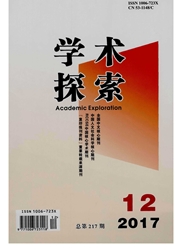

 中文摘要:
中文摘要:
跨国公司主导的国际分工由“产业内”向“产品内”深化,大湄公河次区域(GMS)凭借自身比较优势嵌入全球生产网络的“门槛”不断降低。但是,作为经济发展相对落后的GMS地区,制造业在嵌入全球生产网络的同时容易受到发达国家主导型企业的俘获,陷入“低端锁定”。在测度GMS地区全球价值链和地区价值链指数的基础上,通过面板数据建立模型,讨论GMS地区内生性影响因素对其嵌入全球生产网络的影响。研究发现:GMS地区价值链(SVC)对全球价值链(GVC)的提升具有促进作用。就影响该地区嵌入的内生性因素看,国有资本比率和利税率对GMS地区制造业的产业升级和全球生产网络的嵌入产生阻碍作用;开放性的提高抑制该地区的产业升级,出现“低端锁定”趋势;而资本劳动比率的提升会推动其在全球生产网络的嵌入进程并促进制造业产业升级并。为此,该地区应促进要素配置优化、重视技术进步。
 英文摘要:
英文摘要:
The international division of labor dominated by transnational corporations is getting deepened by "intra - industry" to "intra - product", and the "threshold" is lowering for the GMS to be embedded in the global production network with its own comparative advantage. However, as a relatively backward economic area, it is vulnerable to the capture of developed country - led enterprises into a "low - end lock". Based on the global value chain and regional value chain index of GMS, this paper discusses the influence of endogenous factors in GMS region on its global production network by using panel data model. It is found that the GMS sub -region value chain (svc) has a positive effect on the promotion of the global value chain (gwc). In terms of the effect of endogenous factors, state - owned capital ratio, the profit and tax rate and the openness hinder the industrial upgrading of the manufacturing industry in GMS and the embedding of the global production network. And the improvement of the capital labor ratio will promote the industrial upgrading of the GMS and its embedded process in the global production network. To this end, the region should enhance the optimization of factor allocation, and attach importance to technological progress.
 同期刊论文项目
同期刊论文项目
 同项目期刊论文
同项目期刊论文
 期刊信息
期刊信息
